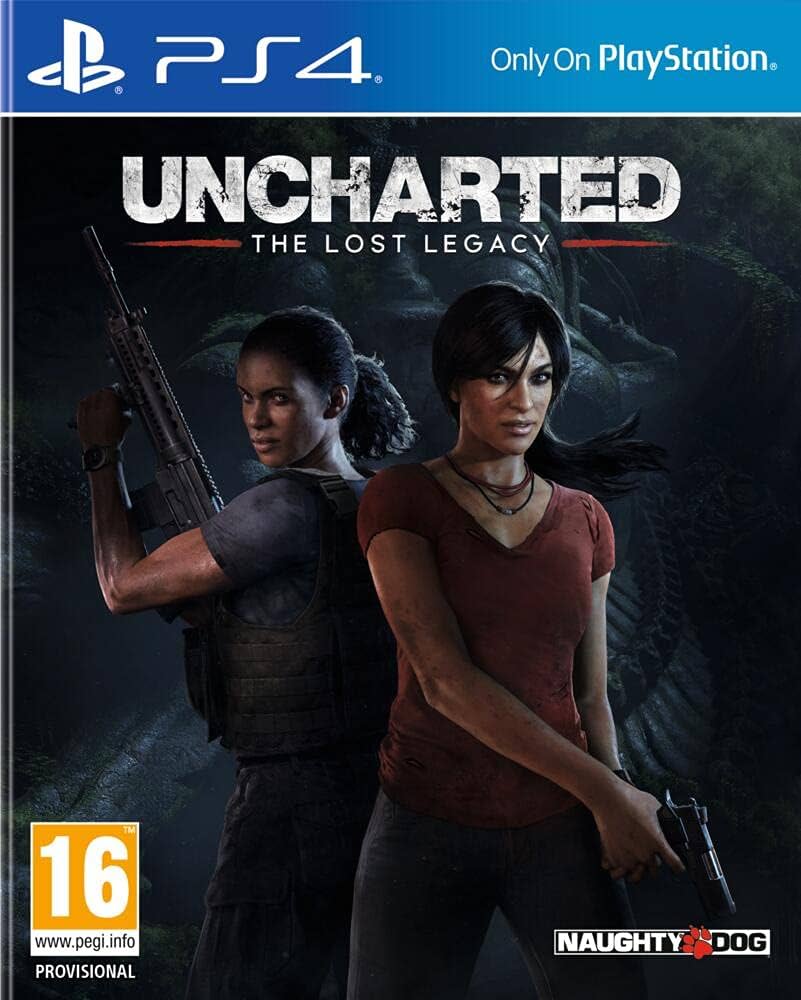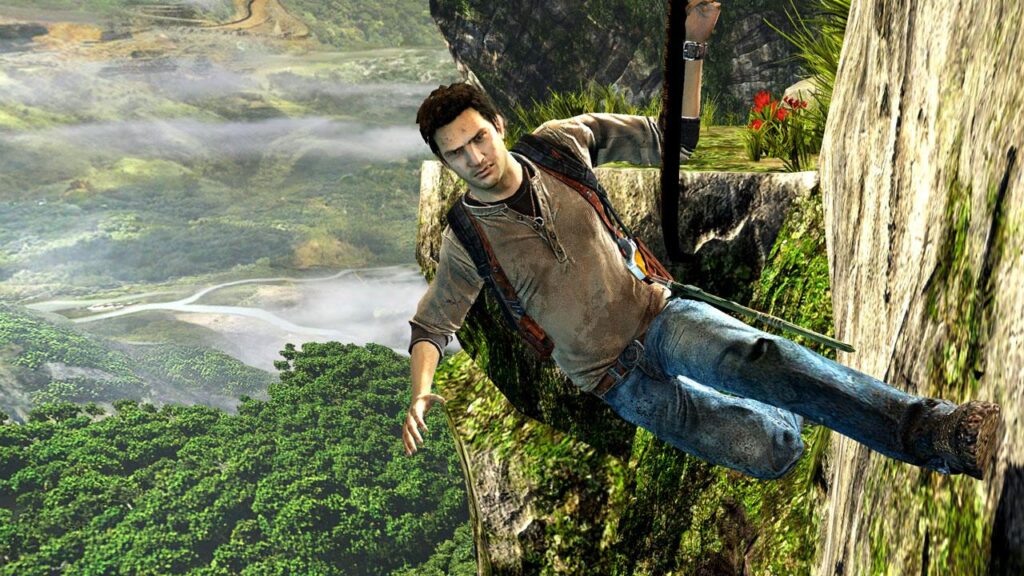Few game series have managed to blend heart-pounding action, globe-trotting exploration, and rich storytelling as effectively as the Uncharted franchise. Developed by Naughty Dog and published by Sony Interactive Entertainment, this beloved action-adventure series has become a cultural touchstone for fans of cinematic storytelling in video games.
Over the span of five main games and a spin-off, the Uncharted series not only solidified itself as a PlayStation juggernaut but also set new standards for interactive storytelling, character development, and action-packed gameplay. Each game is more than just a treasure hunt; it’s a deep dive into the world of history, myth, human relationships, and the morality of adventuring for riches.
In this article, we’ll take a detailed look at each game in the Uncharted series, breaking down its narrative, themes, character arcs, and its role in shaping the franchise’s legacy. From the jungles of South America to the icy peaks of the Himalayas, join me on a deep dive through one of gaming’s most iconic series.

Uncharted: Drake’s Fortune (2007) – The Birth of a Legend
The Uncharted series debuted in 2007 with Drake’s Fortune, introducing us to Nathan Drake, a modern-day treasure hunter with a dubious claim to fame: he believes himself to be a descendant of the legendary English explorer Sir Francis Drake. From the very first cutscene, the game established itself as a thrilling blend of action, mystery, and witty banter.
The Story: The Quest for El Dorado
The plot kicks off with Nathan and his friend, Victor “Sully” Sullivan, searching for the lost city of El Dorado. Unlike the golden city of legend, the treasure they seek is revealed to be a cursed golden statue. Along for the ride is Elena Fisher, a tenacious journalist documenting the adventure, who quickly becomes both a romantic interest for Nate and an integral member of the team.
The journey to find El Dorado leads Nathan through a series of jungle-covered ruins, where he faces off against pirates and a sinister rival treasure hunter named Gabriel Roman. The treasure itself turns out to harbor a dark secret—it’s cursed, and those who come into contact with it transform into violent monsters. This twist introduces a supernatural element that would become a recurring theme in the series, blending historical legends with fantasy in a way that keeps players on the edge of their seats.
Themes: Greed and the Price of Adventure
At its core, Drake’s Fortune is a story about greed and the dangers of unchecked ambition. Nathan, Sully, and their rivals are all after El Dorado, but each for different reasons. For Nathan, it’s about proving his legacy, while Sully seeks to settle his debts. Roman’s quest is purely driven by power and wealth. In the end, the pursuit of riches leads to destruction, a theme that Uncharted revisits time and again.
The chemistry between Nate and Elena also adds a layer of complexity to the adventure. Elena begins the story as an outsider, drawn to the thrill of the hunt for journalistic reasons, but over time, she becomes deeply invested in the danger and excitement. Her growth as a character mirrors Nate’s own arc, as both learn the hard way that treasure hunting comes with moral and emotional costs.
Gameplay: Blending Action and Exploration
Drake’s Fortune introduced players to the core mechanics that would define the series: third-person shooting, platforming, and puzzle-solving. Players are constantly switching between high-octane gunfights and quieter moments of exploration and puzzle-solving, creating a well-balanced pace that keeps the gameplay fresh.
The game also took full advantage of the PlayStation 3’s hardware, pushing graphical boundaries with its lush, detailed environments. The dense jungles, crumbling ruins, and mysterious caves feel alive, immersing players in a world that seems to have been forgotten by time.
The climbing and platforming mechanics, while not yet as refined as they would become in later games, were an integral part of Drake’s Fortune. Nathan’s ability to climb walls, leap across ravines, and navigate treacherous terrain gave players a real sense of being an explorer, while the combat kept the adrenaline flowing.
Development: Shifting from Jak to Nate
Before Uncharted, Naughty Dog was best known for the Crash Bandicoot and Jak and Daxter series, which were more cartoonish and lighthearted. Uncharted marked a significant shift for the studio, moving toward more realistic graphics, mature themes, and cinematic storytelling. The game drew inspiration from blockbuster action films like Indiana Jones, as well as from classic adventure games such as Tomb Raider, but it quickly developed its own identity.
From a technical perspective, Naughty Dog pushed the PlayStation 3 to its limits with their proprietary engine, creating rich textures, realistic lighting, and fluid animations that would become even more polished in future entries. The voice acting, led by Nolan North as Nathan Drake, set a new benchmark for performance in video games, blending humor, emotion, and intensity in a way that made the characters feel real.

Uncharted 2: Among Thieves (2009) – A Masterclass in Storytelling and Gameplay
If Drake’s Fortune was the foundation, Among Thieves was the towering structure that firmly established Uncharted as a force to be reckoned with in the gaming world. Widely regarded as one of the greatest video games ever made, Among Thieves took everything that worked in the first game and refined it, delivering an unforgettable experience that blends action, character development, and stunning set pieces.
The Story: The Search for the Cintamani Stone
Among Thieves begins with Nathan Drake recovering from a near-fatal train crash in the Himalayas, before flashing back to the events that led him there. This non-linear storytelling adds a layer of suspense and mystery right from the start. The plot follows Nate as he teams up with old friends Chloe Frazer and Sully, as well as journalist Elena Fisher, to find the Cintamani Stone, a legendary sapphire hidden in the mythical city of Shambhala.
Along the way, Nate is pursued by a ruthless war criminal, Zoran Lazarević, who wants the stone to gain immortality. This introduces a familiar theme in the Uncharted series: the quest for eternal life, an obsession that corrupts those who pursue it. While Nate begins the adventure in his typical devil-may-care fashion, as the stakes get higher, he finds himself questioning how far he’s willing to go for the sake of treasure.
Themes: Betrayal and Trust
Betrayal plays a central role in Among Thieves, not just in terms of plot twists, but as a thematic undercurrent that drives the relationships between characters. Chloe Frazer, a fan-favorite character introduced in this game, constantly shifts between ally and antagonist, forcing Nate to question whom he can trust. Chloe is a reflection of Nate himself—a treasure hunter who’s out for herself but is capable of deeper loyalty. Their dynamic creates a tense and unpredictable partnership that contrasts with the more stable, but strained, relationship between Nate and Elena.
The game also explores the idea of trust on a broader scale. Nate has to rely on his friends, sometimes reluctantly, to survive. This theme resonates in both the narrative and gameplay mechanics, where teamwork is essential to solving puzzles and surviving intense firefights.
Gameplay: Set Pieces, Stealth, and Cinematic Action
Among Thieves introduced a more robust stealth system, allowing players to approach situations more strategically. The game’s fluid mix of combat, climbing, and puzzle-solving made it feel like players were part of a high-stakes action movie. Every chapter had a memorable moment, from the train sequence (which remains one of the most iconic in gaming history) to the epic showdown in Shambhala.
The set pieces in Among Thieves are legendary. The aforementioned train sequence is a marvel of design, with players scrambling through derailed train cars dangling off a cliff, engaging in combat while trying to avoid plummeting to their death. The pacing and tension of these scenes created a sense of urgency and excitement that made the player feel like they were in control of an action movie.
In addition to set pieces, the game expanded on platforming and climbing mechanics, making traversal more fluid and dynamic. Environments felt more open and interactive, giving players the freedom to approach combat and exploration in various ways.
Character Development: Nate’s Growth and His Relationships
While Drake’s Fortune established Nathan Drake as a charming rogue, Among Thieves gave players a more nuanced look at his character. Nate’s relationships with Elena and Chloe highlight different aspects of his personality. With Elena, there’s a sense of vulnerability and honesty. With Chloe, there’s a mutual understanding of the risks and moral ambiguity involved in treasure hunting. These relationships humanize Nate, giving the player a reason to care about the outcome beyond just the pursuit of the treasure.
The introduction of Lazarević as a villain also raises the stakes. Unlike Gabriel Roman from the first game, Lazarević is a physical and psychological threat who mirrors Nate’s darker side. Where Nate seeks adventure and history, Lazarević seeks domination and immortality. The conflict between these two characters is as much about ideology as it is about physical confrontation.

Uncharted 3: Drake’s Deception (2011) – A Journey into the Past
Uncharted 3: Drake’s Deception deepens the personal stakes for Nathan Drake, exploring his origins and his complicated relationship with Sully. The game takes Nate to the Arabian Peninsula in search of the fabled lost city of Ubar, also known as the Atlantis of the Sands. Along the way, Nate confronts not just physical dangers, but emotional and psychological ones as well.
The Story: The Atlantis of the Sands
The plot of Drake’s Deception revolves around Nathan’s search for the lost city of Ubar, a fabled city hidden deep in the Rub’ al Khali desert. However, the treasure hunt quickly becomes personal, as Nate uncovers secrets about his past and his connection to Sir Francis Drake. The game’s antagonist, Katherine Marlowe, serves as a formidable foil, using psychological manipulation to unearth Nate’s insecurities and test his relationships with Sully and Elena.
The adventure takes players through a wide variety of environments, from dark, labyrinthine London streets to the sun-scorched sands of the Arabian desert. The game’s pacing alternates between high-octane action and slower, more introspective moments, allowing for both spectacle and character development.
Themes: Obsession and the Cost of Adventure
Drake’s Deception is about more than just finding treasure. The game delves into the theme of obsession, both Nate’s and that of those around him. Nathan’s relentless pursuit of his ancestor’s legacy pushes him to the edge, straining his relationships with Sully and Elena. The game repeatedly asks the question: how far is Nate willing to go for the sake of adventure, and what will it cost him?
Sully plays a central role in this theme, as a father figure who constantly warns Nate about the dangers of obsession. Their bond is tested throughout the game, culminating in moments where Nate must decide whether to put treasure or relationships first.
Katherine Marlowe, the game’s main antagonist, represents the intellectual and psychological side of treasure hunting. Unlike previous villains, who were physically imposing, Marlowe is a master manipulator. She digs into Nate’s past and his insecurities, revealing his vulnerabilities and forcing him to confront his inner demons.
Gameplay: Refining the Formula
Drake’s Deception builds on the mechanics of the previous games, adding new elements such as enhanced melee combat and dynamic environmental interactions. The platforming is more fluid, and the environments are more destructible, leading to some truly breathtaking action sequences.
One standout moment is the plane crash sequence, where Nate is thrown out of a cargo plane and must navigate through the wreckage as it plummets to the ground. Another memorable set piece involves a sinking cruise ship, where Nate must escape from a rapidly flooding vessel as it tips into the ocean. These moments exemplify Naughty Dog’s ability to combine storytelling with gameplay in a way that makes players feel like they’re living through a high-stakes action movie.
The puzzles in Drake’s Deception are also more intricate, often requiring players to piece together clues from the environment and historical documents. These puzzles reinforce the game’s themes of exploration and intellectual discovery, rewarding players for paying attention to details.
Character Development: The Origins of Nathan Drake
While previous games hinted at Nate’s past, Drake’s Deception dives deep into his backstory, exploring his childhood and the origins of his partnership with Sully. Players learn that Nate’s obsession with treasure hunting began at a young age, driven by a desire to prove himself as Sir Francis Drake’s heir. Sully’s role as a mentor and father figure is explored in greater depth, adding emotional weight to their relationship.
Elena also returns, once again serving as the moral compass for Nate. Her relationship with him has grown more complex, as she tries to balance her love for him with her concerns about his dangerous lifestyle. This dynamic adds emotional stakes to the adventure, as Nate must ultimately choose between his passion for treasure hunting and his personal relationships.

Uncharted: Golden Abyss (2011) – The PS Vita Adventure
While Golden Abyss is often overlooked in discussions of the mainline Uncharted games, it’s a vital part of the franchise, expanding on Nate’s backstory and providing players with a portable Uncharted experience on the PlayStation Vita.
The Story: A Prequel to Drake’s Fortune
Golden Abyss is set before the events of Drake’s Fortune, with Nathan Drake on the trail of a lost expedition in Central America. He’s joined by a new character, Marisa Chase, an archaeologist who’s searching for answers about her missing grandfather. The plot revolves around the discovery of a series of mysterious golden statues, leading Nate and Marisa through ancient ruins, jungles, and underground temples.
Unlike the other games in the series, Golden Abyss focuses more on puzzles and exploration than on combat, allowing players to immerse themselves in the historical and archaeological aspects of the treasure hunt. The smaller scale of the adventure gives it a more personal, intimate feel, while still delivering the action and intrigue that fans expect from Uncharted.
Themes: Legacy and Family
At its core, Golden Abyss is about legacy, both personal and historical. Marisa’s quest to uncover the truth about her grandfather mirrors Nate’s own journey to understand his connection to Sir Francis Drake. The game explores how our ancestors’ actions shape our present, and how the search for answers can become an obsession.
The relationship between Nate and Marisa also echoes his dynamic with Elena, with Marisa representing the more idealistic, academic side of treasure hunting. This gives Nate a chance to reflect on his own motivations, as he begins to question whether he’s in it for the adventure or for something deeper.
Gameplay: Touchscreen Puzzles and Portable Action
Being a PlayStation Vita game, Golden Abyss takes advantage of the handheld’s unique features. Players use the touchscreen to solve puzzles, such as tracing ancient glyphs and piecing together maps. These mechanics add a tactile element to the gameplay, making the puzzle-solving feel more interactive.
While the combat and platforming are scaled down compared to the mainline games, Golden Abyss still delivers exciting action sequences, including shootouts in dense jungles and daring escapes from crumbling ruins. The game’s smaller environments are densely packed with detail, making exploration feel rewarding even without the massive set pieces of the console titles.

Uncharted 4: A Thief’s End (2016) – The Grand Finale
After nearly a decade of adventures, Uncharted 4: A Thief’s End brought Nathan Drake’s story to a close in a way that was both emotionally satisfying and thrilling. This final chapter explores themes of family, sacrifice, and the cost of living a life of adventure.
The Story: One Last Job
The game opens with Nate having retired from treasure hunting, now living a quiet life with Elena. However, when his long-lost brother Sam resurfaces, Nate is pulled back into the world of treasure hunting for one last job. The brothers set off in search of Henry Avery’s long-lost pirate treasure, navigating through lush jungles, sunken ships, and crumbling pirate forts.
Sam’s return complicates Nate’s life in more ways than one. His reappearance forces Nate to confront his past, his family, and the choices he’s made. The game’s antagonist, Rafe Adler, represents the darker side of treasure hunting—obsession, greed, and betrayal—serving as a mirror to Nate’s own internal struggle.
Themes: Family, Sacrifice, and Redemption
Uncharted 4 is ultimately a story about family. Nate’s relationship with his brother Sam is at the heart of the narrative, as the two navigate the complexities of sibling rivalry, loyalty, and shared history. Sam’s reappearance forces Nate to question the life he’s built with Elena, and whether he can ever truly leave behind the world of treasure hunting.
The game also explores the theme of sacrifice. Throughout the series, Nate has made sacrifices for the sake of adventure, but A Thief’s End forces him to confront the consequences of those sacrifices. His relationship with Elena is strained by his return to treasure hunting, and the game repeatedly asks whether the pursuit of treasure is worth the personal cost.
In the end, A Thief’s End is about redemption. Nate comes to realize that his true treasure is the life he’s built with Elena, and he ultimately chooses to leave behind the dangerous world of treasure hunting for good.
Gameplay: A Cinematic Masterpiece
Uncharted 4 takes everything that worked in the previous games and refines it to near perfection. The climbing and platforming mechanics are more fluid than ever, allowing for seamless transitions between exploration and combat. The addition of a grappling hook adds a new layer of verticality to the gameplay, making traversal feel more dynamic and exciting.
The set pieces in Uncharted 4 are nothing short of spectacular. The Madagascar chase sequence is a standout, as Nate and Sam race through crowded streets in a jeep while being pursued by Rafe’s mercenaries. The final showdown in a crumbling pirate fort is both visually stunning and emotionally charged, providing a fitting climax to the series.
The game also introduces a more open-ended approach to exploration, with larger environments that allow players to approach combat and puzzles in different ways. This gives the player a greater sense of agency and freedom, making the world feel more immersive.

Uncharted: The Lost Legacy (2017) – A New Beginning
While A Thief’s End concluded Nathan Drake’s story, The Lost Legacy shifted the focus to Chloe Frazer, one of the series’ most beloved characters. Set after the events of Uncharted 4, The Lost Legacy follows Chloe and Nadine Ross as they search for the Tusk of Ganesh in the mountains of India.
The Story: A Standalone Adventure
Chloe, first introduced in Among Thieves, steps into the spotlight in The Lost Legacy, where she partners with Nadine, a former antagonist from Uncharted 4. The dynamic between the two women is at the heart of the game, as they start out as reluctant allies but gradually form a strong bond over the course of their journey.
The search for the Tusk of Ganesh takes the duo through stunningly detailed environments, from lush jungles to ancient temples, as they race against a ruthless warlord named Asav. The story balances action, humor, and emotional depth, giving both Chloe and Nadine moments of personal growth and introspection.
Themes: Legacy and Identity
At its core, The Lost Legacy is about legacy—both personal and cultural. Chloe is driven by her desire to live up to her father’s memory, while Nadine grapples with her own identity after the dissolution of her mercenary company. The game explores how our past shapes our present, and how we can forge our own path even when burdened by the weight of legacy.
The relationship between Chloe and Nadine is also central to the game’s themes. Both women are strong, independent, and capable, but they have different approaches to problem-solving and teamwork. Their evolving partnership is one of the highlights of the game, as they learn to trust and rely on each other.
Gameplay: Refining the Formula
The Lost Legacy builds on the mechanics of Uncharted 4, offering a mix of exploration, combat, and puzzle-solving. The open-ended exploration introduced in A Thief’s End is expanded upon here, with larger, more intricate environments that encourage players to explore at their own pace.
The game also introduces new mechanics, such as lockpicking and vehicle-based exploration, adding variety to the gameplay. The combat is fast-paced and fluid, with a greater emphasis on stealth and strategy. The set pieces are as thrilling as ever, with standout moments including a high-speed chase through the jungle and a climactic battle atop a speeding train.




The Legacy of Uncharted
The Uncharted series is more than just a collection of action-adventure games; it’s a masterclass in storytelling, character development, and game design. Over the course of five main games and one spin-off, Naughty Dog created a rich, immersive world filled with memorable characters, breathtaking locations, and heart-pounding action.
The success of the Uncharted series has had a lasting impact on the gaming industry, influencing everything from narrative-driven games to action-packed blockbusters. Nathan Drake’s adventures have become iconic, not just for their thrilling gameplay but for the emotional depth and complexity of their characters.
In the end, Uncharted is about more than just finding treasure. It’s about the relationships we build, the sacrifices we make, and the legacy we leave behind. Whether it’s Nate’s journey to redemption, Chloe’s quest for identity, or the unbreakable bond between friends and family, the Uncharted series reminds us that the greatest treasures in life aren’t made of gold—they’re the people we love and the experiences we share.


With this expanded structure, the article would dive deeply into each aspect of the game series. By focusing on character development, themes, gameplay, and the emotional core of the narrative, we can make this article not only detailed but also engaging for fans and newcomers alike. Would you like me to continue writing it?









